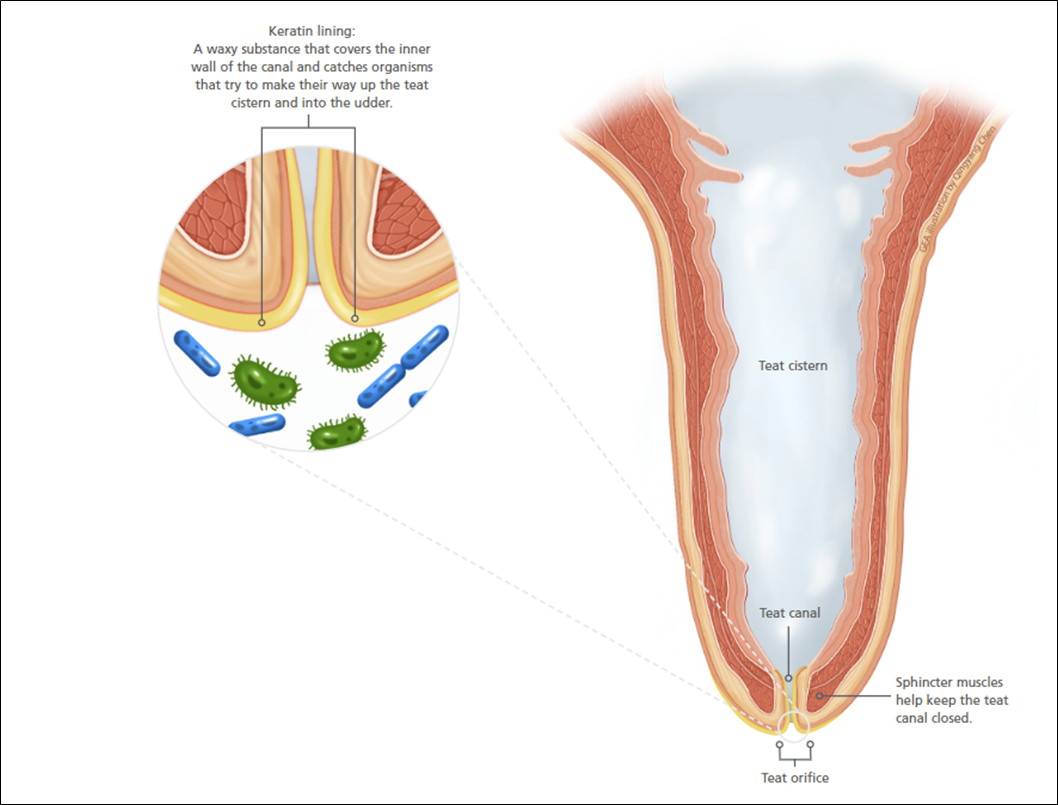Prioritising teat health in the lead up to drying off
7 Mar 2024

Going into the dry period with healthy teats is paramount to starting the season off strong. This is particularly important because teat thickness changes rapidly once winter starts to kick in and conditions get cold and windy.
Being proactive with teat health before drying off will help to reduce the risk of hyperkeratosis, elevated somatic cell count (SCC) and early lactation mastitis after calving.
In this short article, Colin May (FIL National Sales Manager) shares four key considerations to prepare your herd for a healthy and infection-free dry period:
1. Teat spray after milkings:
Teat spraying is the single most effective practice in controlling mastitis as it kills mastitis-causing bacteria on the teat skin. Whether application is manual or automatic, teat surface should be adequately covered with teat spray at the end of each milking.
“It is critical to have complete coverage of both the teat end and teat barrel to kill any bacteria that may enter through cracked skin,” says Colin.
2. Add additional emollient to teat spray:
Increasing the level and number of emollients in your teat spray before winter can help precondition teat skin by making it more soft and ready for the dry period in the paddock.
“In the last six weeks of lactation, we recommended that the emollient levels are between 12-15% to condition teats so they are soft and supple,” says Colin. “It is far easier to administer dry cow antibiotic and teat seal when teats are in good condition”.
“If you have severely damaged teats, we recommend using Active Teat Cream – a uniquely formulated iodine-based antiseptic cream with Manuka honey to help restore cracked and severely chapped teats”.
3. Follow proper milking procedures and stringent hygiene standards:
Having stringent hygiene standards in the dairy shed will help prevent the transmission of bacteria and pathogens between cows. Colin says it’s crucial to wear milking gloves during milking and when handling cows.
“If you are stripping cows, disinfect your hands between cows with a bucket of hot water.”
“Keeping the dairy shed as clean as possible in the lead up to drying off will keep the risk of bugs in the environment to a minimum and increase your chances of having healthy udders after calving.”
And simple changes to milking procedures can make a big difference too.
“We see a lot of sheds with poor cluster alignment and incorrect vacuum levels, which will be attributing to poor teat condition and hyperkeratosis. Severely damaged teats are harder to teat seal or take milk samples from, as it causes pain to the cow.
“Ensure clusters are hanging symmetrically under the udder, which will reduce strain on the teats and enable an even milk out.
“When manually detaching clusters at the end of milking, break vacuum and let the cups fall naturally. There shouldn’t be any pulling involved.”
Colin adds that trimming tails before drying off is recommended as it reduces the chances of mastitis caused by E. coli over the dry period when cows are not closely monitored, and tails are dirty and wet.
4. Keratin lining:
The inner wall of the teat canal is coated with a waxy substance called ‘keratin’. These keratin cells have a sticky property, which act as the cow’s natural defense mechanism against mastitis-causing bacteria - especially during the dry period.
During milking, approximately 40% of the keratin lining is stripped away1. “This means that the keratin lining requires regeneration,” says Colin.
“Overmilking is a matter of concern just before drying off as the keratin plug takes time to form. Overmilking also results in teat damage.”
“The keratin plug will slowly open back up in preparation for lactation. The first week after drying off and the final week prior to calving are when cows are particularly susceptible to udder infections.”

For more information, talk to your local FIL Area Manager or check out the following resources:
• DairyNZ: https://www.dairynz.co.nz/animal/mastitis/mastitis-overview/
• DairyNZ: https://www.dairynz.co.nz/animal/mastitis/dry-off/
• FIL Podcast on implementing an effective dry off plan: https://www.youtube.com/watch?v=-Y5quTmwcDo
References:
1 https://irishvetjournal.biomedcentral.com/articles/10.1186/2046-0481-62-S4-S15
Back...
